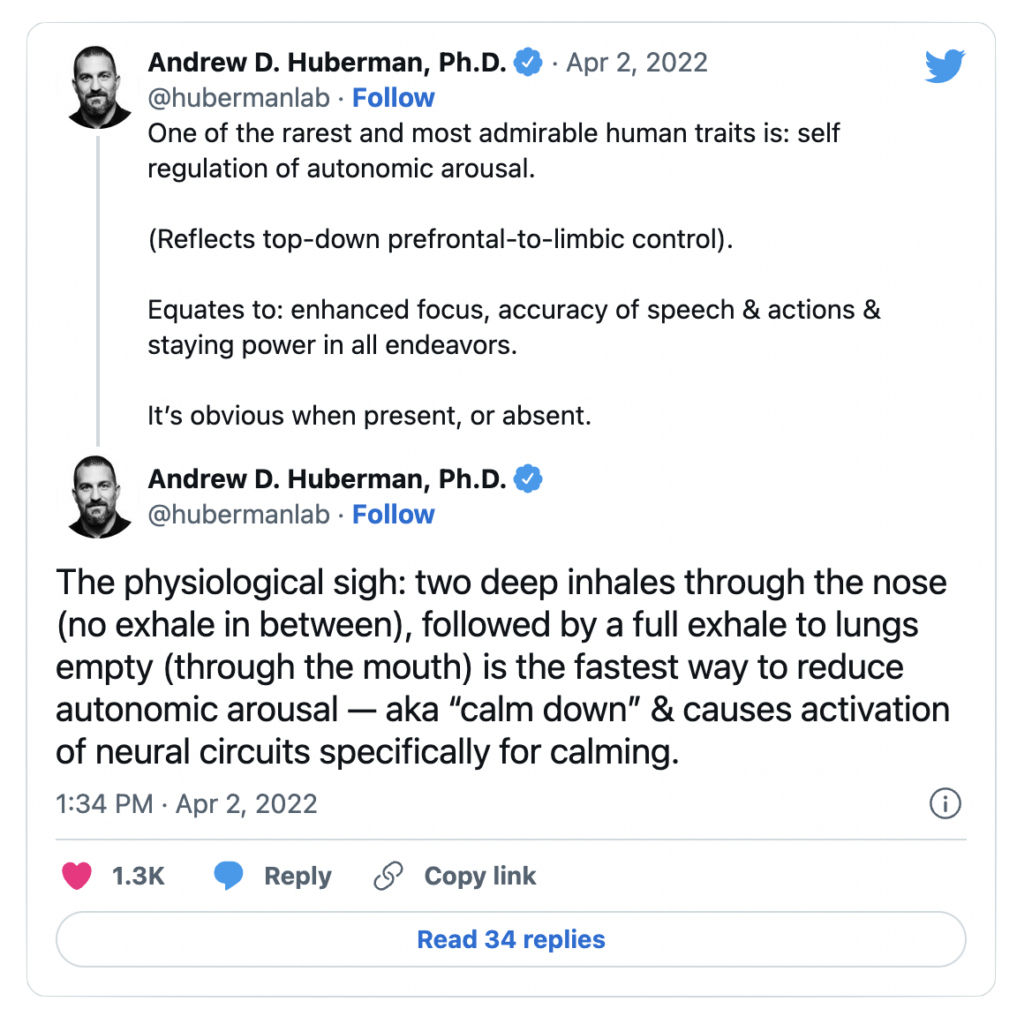Breathwork has been around for centuries and is said to have many potential health benefits. While the scientific evidence is still being explored, many believe breathwork techniques can improve mental and physical health.
Breathwork Basics
Breathwork is a wellness practice that involves using specific breathing techniques to improve health and promote a sense of wellbeing. The practice has its roots in ancient yogic and Buddhist traditions, and has gained popularity recently as a way to improve mental and physical health.
Some techniques focus on slowing the breath to lower heart rate and promote a sense of calm. Others do the opposite, encouraging fast, rhythmic breathing, sometimes accompanied by movement or sound, in order to stimulate somatic release, a term used to describe the physical and emotional release that can occur during breathwork.
Common Breathwork Techniques
There are many different types of breathwork techniques, all of which involve directing purposeful focus to the breath.
Physiological Sigh
Often promoted by Dr. Andrew Huberman, the physiological sigh is a type of breathwork you’re likely already doing. It’s a specific breathing pattern that happens involuntarily throughout the day, including before sleep and during moments of stress, like when we cry.
The physiological sigh involves two inhales (without exhaling in between) followed by an exhale. The double inhale re-inflates collapsed alveoli in our lungs, optimizing the removal of C02, and promoting relaxation in the body.

Box Breathing
Box Breathing (also known as 4-4-4-4 breathing) is a breathwork technique used by Navy SEALs to reduce heart rate, promote calm, and increase focus. The technique is simple: breathe in for 4 seconds, hold your breath for 4 seconds, breathe out for 4 seconds, and hold for 4 more seconds. Repeat this sequence as many times as you like.
4-7-8 Breathing
Dr. Andrew Weil, founder of the Arizona Center for Integrative Medicine, developed the 4-7-8 breathwork technique to reduce stress and anxiety and improve sleep. As the name implies, the technique involves breathing in for 4 seconds, holding for 7 seconds, and then breathing out for 8 seconds. This type of breathing is especially useful when trying to fall asleep, and is described by Dr. Weil as “a natural tranquilizer for the nervous system“.
Wim Hof Breathing
Wim Hof breathing is a breathwork technique developed by extreme athlete Wim Hof. The technique is part of the Wim Hof Method: a combination of breathing exercises, cold exposure, and willpower.
A round of Wim Hof breathing includes 3 stages: controlled hyperventilation, the hold, and the recovery breath.
- Controlled hyperventilation: a deep inhale through the nose followed by a relaxed exhalation through the mouth. Repeat 30 – 40 times in a relaxed manner.
- The hold: after the last exhale, inhale once more as deeply as possible, then exhale, and hold. Hold your breath until you feel a strong urge to breathe.
- Recovery breath: When you feel the urge to breathe again, inhale once deeply to fill your lungs, expanding your belly and chest. Hold your breath for about 15 seconds, then exhale.
This cycle can be repeated 3-4 times and is said to induce a sense of calm bliss, much like meditation. It can cause lightheadedness, so practice in a safe, seated position where you won’t be harmed if you fall.

The scientific evidence for breathwork
While breathwork practices have been used for centuries, modern research is still catching up.
Breathwork appears to work by helping to calm the nervous system and release tension in the body. This can have a range of positive effects on mental and physical health. Some studies suggest that intentional breathing practices can help reduce anxiety, stress, and PTSD. An 8-week study in 2017 showed that diaphragmatic breathing had positive impacts on mood, concentration, and cortisol levels.
While the evidence is still preliminary, breathwork appears to be a promising tool for improving mental and physical health. If you’re interested in trying breathwork, it may be helpful to find a practitioner to guide you through the process.
Othership, a wellness facility in Toronto, includes breathwork techniques in their hot/cold therapy group classes. They also have an app you can use to practice guided breathwork anywhere.
As always, it’s important to exercise caution using any new technique. Certain types of breathwork can cause lightheadedness and affect heart rate, so it’s never recommended to engage in these techniques in or around water. But overall, breathwork is a relatively safe practice for most people and may offer some benefits for those struggling with stress or trauma.

